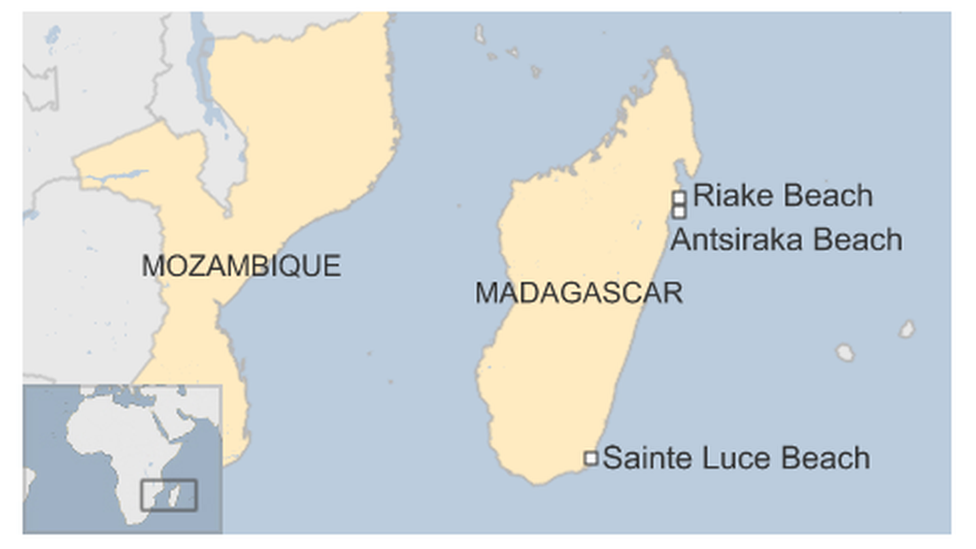MH370 search: Doubts over 'debris burn marks'
- Published

Australian authorities have cast doubt on the theory that Malaysia Airlines flight MH370 may have had a fire on board before it went missing.
Earlier this month, pieces of debris appearing to show burn marks were recovered in Madagascar.
However, authorities say there is no evidence yet that the debris came from MH370 - and the dark marks were caused by resin on the debris, not fire.
MH370 had 239 people on board when it vanished in March 2014.
The flight, which was flying from Kuala Lumpur to Beijing, is presumed to have crashed into the southern Indian Ocean after veering off course.
'Localised heating'
The five fragments had been found by debris hunter Blaine Gibson, who has previously found other parts of the plane.
The pieces were recovered near Sainte Luce, in south-eastern Madagascar.
Two of the pieces appeared to show burn marks, which, experts said, could provide more information on what happened to flight MH370 if confirmed.

The relatives of those on board are still waiting for answers about the fate of the plane
However, Australian Transport Minister Darren Chester said on Thursday that an initial investigation showed that "contrary to speculation there is no evidence the item was exposed to heat or fire".
The dark markings on the two pieces of debris "related exclusively to a translucent resin that had been applied to those surfaces", a report from the Australian Transport Safety Bureau said.
There were three small marks on one fragment that smelt burnt - but the heat damage appeared to be recent and a result of "localised heating", the ATSB added.
End of search?
A number of other pieces of debris, some confirmed to have come from MH370, have been found in countries near Madagascar.
They include a section of the wing called a flaperon, found on Reunion Island, and a horizontal stabilizer from the tail section and a stabilizer panel with a "No Step" stencil discovered in Mozambique.

Mr Gibson, a lawyer from Seattle, has funded his own search for debris in east Africa.
Australia has been leading the search for the missing aircraft, using underwater drones and sonar equipment deployed from specialist ships.
The search, also involving Malaysia and China, has led to more than 105,000 sq km (40,500 sq miles) of the 120,000 sq km search zone being scoured so far.
But countries have agreed that in the absence of "credible new information" the search is expected to end later this year.
